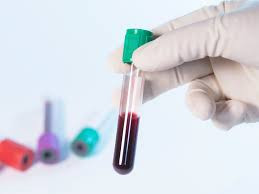Definition
Hemoglobin, a vital protein within red blood cells (erythrocytes), gives blood its characteristic red color and contains iron, allowing blood to bind and transport oxygen. This component is essential for red blood cells to deliver oxygen from the lungs to tissues and organs throughout the body.
Hemoglobin levels are key indicators of red blood cell health. Monitoring these levels assists healthcare professionals in identifying blood disorders and related conditions. Hemoglobin analysis, a test of hemoglobin concentration in the blood, is commonly used to diagnose anemia—a condition marked by low hemoglobin or inadequate healthy red blood cells. This analysis is typically part of a complete blood count.
Indications
Hemoglobin tests are generally included in routine blood screenings and are standard in initial evaluations for newborns. Your physician may also recommend this test if you experience symptoms like:
- Fatigue
- Frequent dizziness
- Cold extremities (hands and feet)
- Family history of conditions like thalassemia, sickle cell anemia, or other blood disorders
- Malnutrition due to specific diets
- Repeated or prolonged infections
- Significant blood loss due to injury or surgery
Contraindications
There are no specific contraindications associated with hemoglobin analysis tests.
Preparations Before the Test
There is no particular preparation needed for a hemoglobin analysis test, and fasting is not required. Inform your physician if you are using any medications or foods that may affect test results. It is also advisable to stay calm and hydrated.
Test Procedure
Hemoglobin analysis requires a blood sample. A lab technician will clean the skin on your arm with alcohol and collect a small blood sample from a vein using a sterile syringe. For infants, blood is usually drawn from the heel.
If blood is drawn from a vein, the technician will first clean the area with antiseptic and apply a tourniquet to the arm to increase pressure, causing veins to fill with blood. A needle will be inserted into a vein, typically at the inner arm, elbow, or back of the hand, to draw blood into a vial or syringe. After removing the tourniquet, the blood-draw site is covered with a bandage to prevent bleeding.
The blood sample is then placed in a tube and processed by a laboratory technician using specialized equipment. This test typically takes a day to yield results. The procedure is generally low-risk, though some individuals may experience mild pain, dizziness, or bruising at the puncture site, which usually resolves quickly. The test itself typically takes about 10 minutes, including preparation and cleanup.
Normal and Abnormal Values
Normal hemoglobin values in adults range from 12 to 17.4 grams per deciliter (g/dL) of blood. However, age, race, and gender can influence this range.
Abnormal values are identified when hemoglobin levels fall outside this normal range. Various factors, such as altitude, diet, exercise, and certain medications, can also affect hemoglobin levels, contributing to abnormal results.
Results and Recommendations (Further Testing)
Normal
If your hemoglobin analysis results are within the normal range, it suggests that your red blood cell health is well maintained. To continue supporting overall health, maintain a balanced diet, engage in regular physical activity, and schedule routine health check-ups.
Low
If your hemoglobin test results fall below the normal range, it may suggest insufficient production of red blood cells. This deficiency can result from accelerated red blood cell destruction, as seen in hemolytic anemia. Long-term low levels of red blood cells may also contribute to reduced hemoglobin levels.
Low hemoglobin is often indicative of anemia and may signal issues such as iron deficiency, malnutrition (like vitamin B12 or folate deficiency), certain cancers affecting blood or the spine, thalassemia, kidney or liver disorders, sickle cell anemia, autoimmune diseases, or blood loss due to surgery, injuries, menstrual bleeding, or gastrointestinal bleeding.
High
If your hemoglobin test results exceed the normal range, possible causes include:
- Polycythemia vera
- Dehydration
- Burns
- Severe vomiting
Consult the Right Doctor
If your hemoglobin analysis results are outside the normal range, consult a general practitioner for a proper diagnosis and therapy. If needed, you may be referred to an internal medicine specialist for more targeted treatment. Your doctor may recommend additional tests to confirm the diagnosis.
Want more information on laboratory, radiology, and other test results? Click here!
- dr. Monica Salim
Hemoglobin Test. (2022). Retrieved 03 May 2023, from https://www.mayoclinic.org/tests-procedures/hemoglobin-test/about/pac-20385075
Hemoglobin Test. (2022). Retrieved 03 May 2023, from https://medlineplus.gov/lab-tests/hemoglobin-test/
Hemoglobin Test. (2022). Retrieved 03 May 2023, from https://my.clevelandclinic.org/health/diagnostics/17790-hemoglobin-test
Hemoglobin Blood Test. (2021). Retrieved 03 May 2023, from https://www.testing.com/tests/hemoglobin/
What is a Hemoglobin Blood Test?. (2022). Retrieved 03 May 2023, from https://www.verywellhealth.com/hemoglobin-level-test-1942658
Hemoglobin. (2023). Retrieved 03 May 2023, from https://www.urmc.rochester.edu/encyclopedia/content.aspx?contenttypeid=167&contentid=hemoglobin











